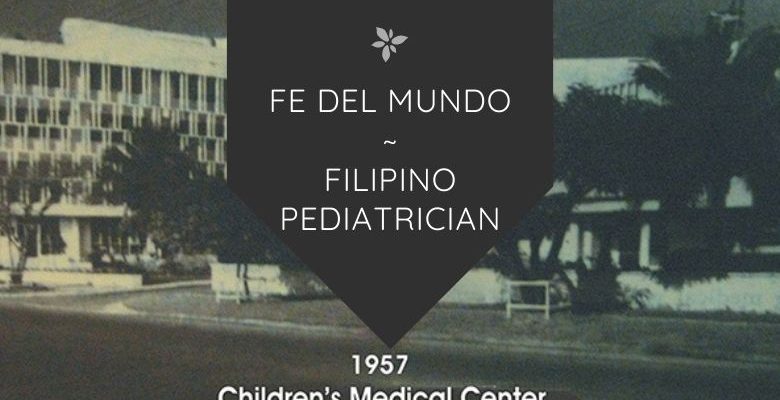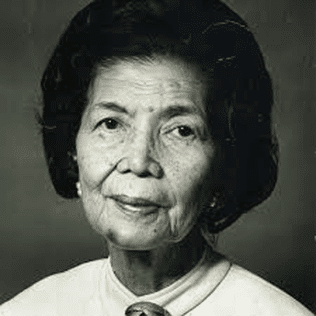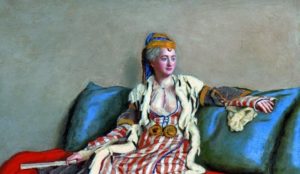Fe del Mundo (1911–2011) was a Filipino pediatrician who was the first woman to be admitted to Harvard Medical School in 1936 — over ten years before the school officially began admitting women. She was also the first woman to be named National Scientist of the Philippines in 1980, and founded the first pediatric hospital in the Philippines.
Born in Manila in the Philippines in 1911, Fe decided to become a doctor when her older sister died from appendicitis at the age of 11. She enrolled in the University of the Philippines in 1926. While earning her medical degree, she decided to pursue pediatrics.
Fe graduated in 1933 as valedictorian of her class. The president of the Philippines, Manuel Quezon, offered her a full scholarship to study any medical field of her choice at any school in the United States. She chose Harvard Medical School.
Women had been earning MD degrees in the United States since Elizabeth Blackwell became the first in 1849. Still, not many schools allowed women to enroll. (Even Elizabeth Blackwell was only admitted to Geneva Medical College because they thought her application was a joke.) The first woman to apply to Harvard Medical School, Harriet Hunt in 1847, was denied after the students organized a protest against her and three black students.
Harriet Hunt was only the first of many women to apply to Harvard Medical School over the years, and only the first of many to be denied. If the faculty or board didn’t turn them away, the students themselves would protest, claiming that “whenever a woman proved herself capable of intellectual achievement, the area in question ceased to constitute an honor to the men who had previously prized it” (“Matriculation of Women: 1871 – 1920”). The school even once turned down a $200,000 donation in 1882 (worth over $4 million today) offered on the condition that “its advantage can be offered to women on equal terms with men”.
At the beginning of the 20th century, Harvard Medical School was finally beginning to waver in its stand against women applicants. The pressures of World War I and the Great Depression resulted in an increasing shortage of male applicants, and the school held several meetings in the 30s and 40s to discuss the inclusion of women.
It was during these debates that the school received Fe del Mundo’s application. Due to an oversight, officials didn’t realize Fe’s gender, and unwittingly enrolled their first female student.
The mistake wasn’t realized until Fe arrived in Boston in 1936 and found she was assigned to an all-male dorm. Her record was so strong, however, that the head of pediatrics claimed there was no reason to turn her away since she’d already been admitted. Fe del Mundo then became the first female student at Harvard Medical School, and the only woman to be enrolled at the time.
After attending the University of Chicago and completing her Master’s degree in bacteriology at the Boston University School of Medicine, Fe del Mundo returned to the Philippines in 1941. She began working with the International Red Cross, and set up a hospice at an internment camp during the Japanese invasion of her country. She became known as “The Angel of Santo Tomas” for her work helping children detained at the University of Santo Tomas.
After the Japanese shut down her hospice in 1943, the mayor of Manila asked her to set up a government hospital. She became director of the new medical center, but soon became frustrated with the constraints of working for the government, and left to start a private hospital.
To fund her hospital, Fe sold her home and almost everything she owned. The Children’s Medical Center in Quezon City, the first pediatric hospital in the Philippines, opened in 1957. The following year, she conferred her ownership of the hospital to a board of trustees.
While Dr. del Mundo continued to practice pediatrics at The Children’s Medical Center, she also continued her research into infectious diseases. Undaunted by the lack of modern laboratory facilities in the Philippines, she often shipped samples abroad for analysis. In her lifetime she published over a hundred articles, reviews, and reports in medical journals. Her research into dengue fever especially contributed to a greater understanding of how the disease works and affects children.

Fe also wrote the “Textbook of Pediatrics”, which was used in medical schools in the Philippines for many years. Throughout her career she was active in promoting public health, with an emphasis on rural mothers and their children. Her work also helped to facilitate and improve the coordination between hospitals, doctors, and midwives.
Since she sold her home to fund the opening of The Children’s Medical Center in 1957, Fe took up residence on the second floor of the hospital. She lived in the hospital for the rest of her life, and was still making rounds to check on patients when she was wheelchair-bound at the age of 99. She passed away from a heart attack just a few months before her 100th birthday in 2011.
Next, read about 3 Famous Nurses in History, or Elizabeth Blackwell, M.D., America’s first female doctor.
References
- “Del Mundo, Fe | BIOGRAPHY.” (1977). Ramon Magsaysay Award Foundation. Retrieved from http://www.rmaf.org.ph/newrmaf/main/awardees/awardee/profile/190
- “Fe del Mundo.” (n.d.). Wikipedia. Retrieved from http://en.wikipedia.org/wiki/Fe_del_Mundo
- Lim, F. “Woman of Many Firsts.” (2007). PHILIPPINE CENTER FOR INVESTIGATIVE JOURNALISM. Retrieved from http://pcij.org/i-report/2007/fe-del-mundo.html
- “Matriculation of Women: 1871 – 1920.” (n.d.). Harvard Medical School, Joint Committee on the Status of Women. Retrieved from http://hms.harvard.edu/departments/joint-committee-status-women/resources/interesting-reports/matriculation-women-harvard-medical-school/1871-1920
Keri is a blogger and digital marketing professional who founded Amazing Women In History in 2011.






overwhelming support to all the Filipinos around the world.
Wow…what a remarkable & driven woman. It is amazing how much she accomplished for the Philipines & the world, in medicine and research and public health. They are complementary, but require different skills. Truly remarkable. Thank you for AT&T FACES for sharing this.
She’s also the first one to create a prototype of an incubator made with bamboos. Sad she’s not credited.